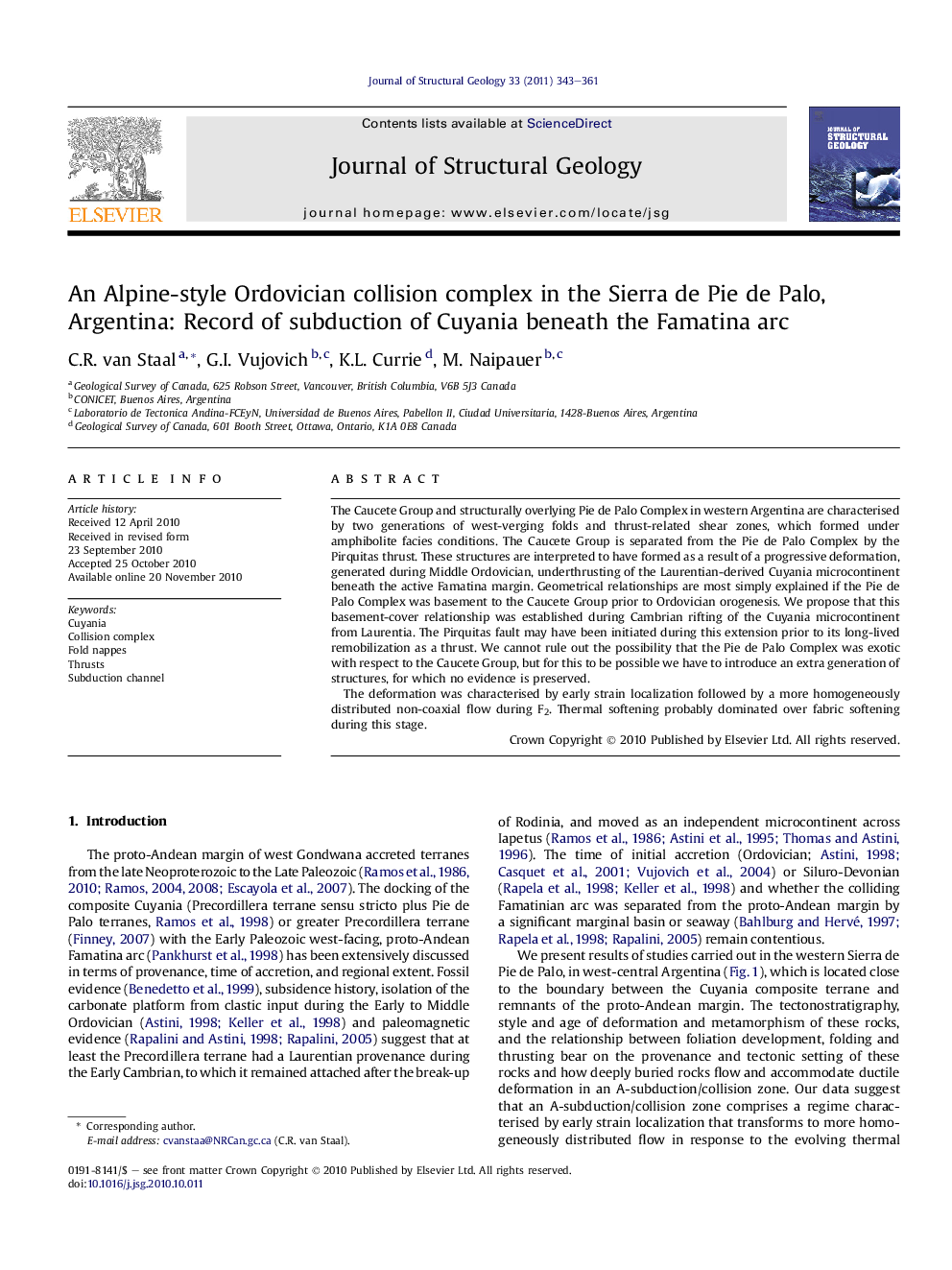| کد مقاله | کد نشریه | سال انتشار | مقاله انگلیسی | نسخه تمام متن |
|---|---|---|---|---|
| 4733567 | 1357036 | 2011 | 19 صفحه PDF | دانلود رایگان |

The Caucete Group and structurally overlying Pie de Palo Complex in western Argentina are characterised by two generations of west-verging folds and thrust-related shear zones, which formed under amphibolite facies conditions. The Caucete Group is separated from the Pie de Palo Complex by the Pirquitas thrust. These structures are interpreted to have formed as a result of a progressive deformation, generated during Middle Ordovician, underthrusting of the Laurentian-derived Cuyania microcontinent beneath the active Famatina margin. Geometrical relationships are most simply explained if the Pie de Palo Complex was basement to the Caucete Group prior to Ordovician orogenesis. We propose that this basement-cover relationship was established during Cambrian rifting of the Cuyania microcontinent from Laurentia. The Pirquitas fault may have been initiated during this extension prior to its long-lived remobilization as a thrust. We cannot rule out the possibility that the Pie de Palo Complex was exotic with respect to the Caucete Group, but for this to be possible we have to introduce an extra generation of structures, for which no evidence is preserved.The deformation was characterised by early strain localization followed by a more homogeneously distributed non-coaxial flow during F2. Thermal softening probably dominated over fabric softening during this stage.
Research highlights
► Study documents relatively high-pressure Middle Ordovician collision complex between the Laurentia-derived Cuyania microcontinent (lower plate) and the Famatina arc along the proto-Andean margin of Gondwana.
► Major thrust between Mesoproterozoic basement and Neoproterozoic-Cambrian cover records a protracted history of remobilization and may have been initiated as an extensional fault. Younger, syn-metamorphic F2-related thrusts appear to form along the inverted limb of fold nappes.
► Strain distribution and dominant softening mechanism changed over time mainly in response to an evolving thermal regime.
Journal: Journal of Structural Geology - Volume 33, Issue 3, March 2011, Pages 343–361